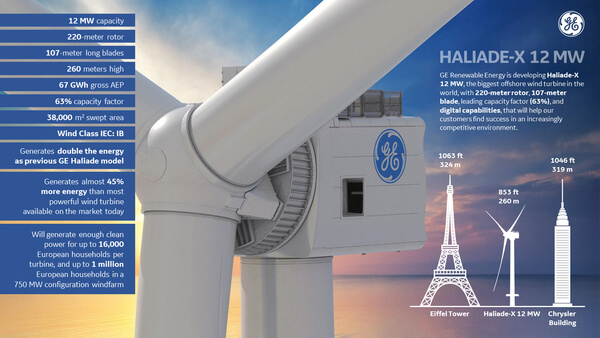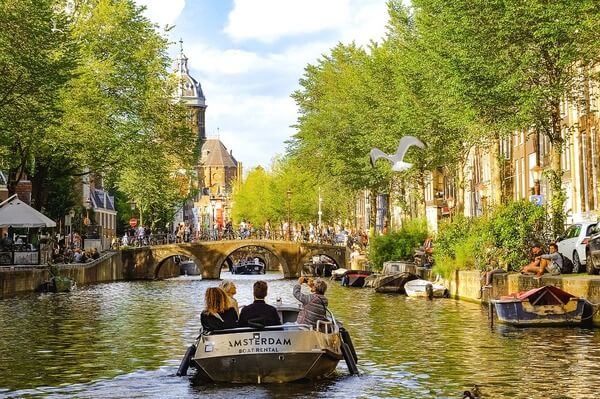News Release from windfair.net
Wind Industry Profile of
From Windmills to Haliade-X: Wind Energy in the Netherlands
In the Netherlands of all places, GE Renewable Energy and their partner Future Wind plan to install the world's largest wind turbine to date this summer. Although the Haliade-X with a capacity of 12 megawatts is actually an offshore turbine, the prototype will initially be erected onshore. In the port of Rotterdam, to be exact.
Wind and weather fit
The North Sea can become rough and uncomfortable, especially in winter. The idea was to make it easier for the engineers to access the plant during the five-year test phase. Nevertheless, the turbine can also be tested on the flat land in Rotterdam “in the most drastic weather conditions,” explained John Lavelle, Vice President at GE Renewable Energy and CEO of the Offshore Wind Unit, at the presentation of the plans with reference to the windy climate in Holland.
The dimensions of the new GE turbine are gigantic: it has a rotor diameter of 220 meters - twice as long as a football pitch - and extends up to 260 meters from base to rotor blades. This is almost three times as high as the Statue of Liberty in New York, measured from the ground to the tip of the flashlight.

The new wind turbine is really impressive (Image: GE Renewable Energy)
One would think that the Dutch in particular were accustomed to this sight, as Holland is famous for its windmills, the predecessors of modern wind power plants.
From pioneer to detentionist
However, a look at the current expansion figures shows that the Dutch have somehow missed the trend of modern wind turbines. In the early years of 'new' wind energy, small companies in particular developed and installed a number of wind turbines, but these companies have almost all long since been swallowed up by the competition. The size of the wind turbines, on the other hand, has increased many times over in parallel with the output - but the early turbines of the Dutch have by no means all been replaced through repowering.
Although the country has regularly made a name for itself in recent months with the announcement of major offshore projects, these wind farms will not improve the balance until next year at the earliest, when the first wind farms will start supplying electricity.
Not at the forefront in Europe
So far, the Dutch have only been at the back of the EU when it comes to the production of renewable energies. Last year, the share of renewable energies in the country's electricity consumption rose from 15 to 17 percent compared to the previous year. The share of renewable energies in total energy consumption rose from 6.6 to 7.3 percent. This is no good standing compared to other nations, some of which already obtain more than 40 percent of their energy from renewables.
In recent years, the solar industry in particular has been able to grow rapidly in the Netherlands. Last year alone, the country's PV output grew by 50 percent.
This imbalance compared to onshore wind is mainly due to the Dutch subsidy system (SDE+), as journalist Karel Beckman explains at Cleantechnica: The system is based on tenders that award subsidies to the most cost-effective bidders, measured in terms of CO2 reduction. Solar projects won the tenders by an overwhelming majority, so large solar projects are currently being implemented in the country of windmills.

Canal tour in Amsterdam (Image: Pixabay)
Sun instead of wind
"The Netherlands is densely populated, which limits the long-term opportunities for developing land-based renewable energy facilities," says Anders Marcus, CEO of Obton, a company that develops solar and wind projects. In Holland alone, Obton built three of the six largest solar plants. However, he warns that public acceptance of both onshore wind and solar systems will dwindle in the future. But "we are still able to find suitable locations for land-based solar PV facilities, but if we are to meet the demand in the long run, we must explore other opportunities" - e.g. on people's rooftops.
So perhaps in the future, we will see many small solar plants on the roofs of Amsterdam during a canal tour.
- Author:
- Katrin Radtke
- Email:
- press@windfair.net
- Keywords:
- Netherlands, Holland, Haliade-X, GE, renewable energy, windmill, Rotterdam, wind energy, electricity


























